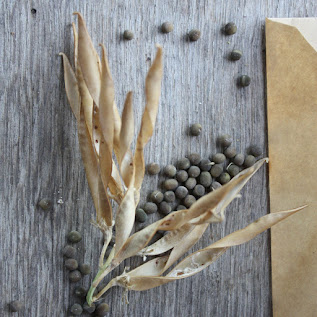How long do seeds last?
- Jane Westoby
- Jan 9
- 3 min read
Updated: May 23
Seeds are tiny powerhouses of life, packed with potential to grow into thriving plants. But how long can seeds stay viable?
The answer depends on several factors, including the type of seed, how they are stored, and their initial quality.
Seeds don’t last forever, but some can remain viable for years or even decades under the right conditions. For most seeds, viability declines over time, meaning the percentage of seeds that germinate will decrease as they age, eventually getting to zero. Some seeds, like those of certain trees and wildflowers, have evolved to survive for exceptionally long periods in nature. For instance, lotus seeds have been known to germinate after thousands of years!

Factors Affecting Seed Viability
Seed Type: Different seeds have varying natural lifespans. Some seeds, like parsnips, have short viability, while others, like melons, are more durable.
Storage Conditions: Proper storage is key to preserving seed viability. The ideal environment is cool, dry, and dark. High humidity, heat, and light can degrade seeds quickly.
Initial Quality: The fresher and healthier the seeds were when harvested and stored, the longer they’ll last.
Seed Treatments: Some seeds are treated with coatings or stored in vacuum-sealed packages to extend their lifespan.
How to Test Seed Viability
Not sure if your seeds are still good? You can sow them and see or here’s an easy germination test. It will save you time and not waste space and compost etc if you know beforehand if the seed is still viable:
Select a Sample: Choose a few seeds from the packet.
Moisten a Paper Towel: Dampen a paper towel with a spritz of water and place the seeds on it.
Seal and Wait: Fold the towel, place it in a zip lock bag to prevent the paper from drying our but do not seal the bag completely. Just loosly fold it over at the top, and keep it in a warm place. i.e airing cupboard,
Check for Sprouts: After a few days to a week, check if any seeds have sprouted. The percentage of sprouted seeds will give you an idea of their viability. If no seeds sprout then try leaving the bag in the light but on in direct sunlight ( Some seeds will light light to germinate) and repeat the process for another week.
If nothing sprouts then the seed is not viable and you will need to buy new.

Here’s a general guideline for common seed types:
1-2 Years: Parsnip, Delphinium, Poppy
1-2 Years: Sweet corn, Onion,
2-3 Years: Beetroot, Chard, Leafbeet, Carrots, Peppers, Aubergine, Zinnia, Cosmos, Sunflower
3-4 Years: Courgettes & Squash, Parsley, Tomatoes,
3-5 Years: Beans, Peas, Carrots, Tomatoes, Lettuce, Radishes, Brassicas
5+ Years: Cucumbers, Squash, Melons, Spinach, Nasturtium, Sweet pea

Tips for Extending Seed Longevity
Store Properly: Use airtight containers like mason jars or vacuum-sealed bags. Add a desiccant (like silica gel) to absorb moisture.
Choose the Right Location: Store seeds in a refrigerator or freezer for long-term storage. Just ensure they’re completely dry before freezing.
Label Clearly: Write the seed type and collection date on the container to keep track of their age.
Avoid Excessive Handling: Oils from your hands can affect seeds. Handle them minimally and use clean tools.
When to Replace Seeds
If you’re planting a critical crop or need reliable germination rates, it’s best to use fresh seeds. For non-critical projects, older seeds can still be used, just remember that germination rates might be lower, and you may need to plant more seeds to compensate.
Explore Seeds to SOW NOW
Explore FLOWER SEEDS
Explore VEGGIE SEEDS










Comments